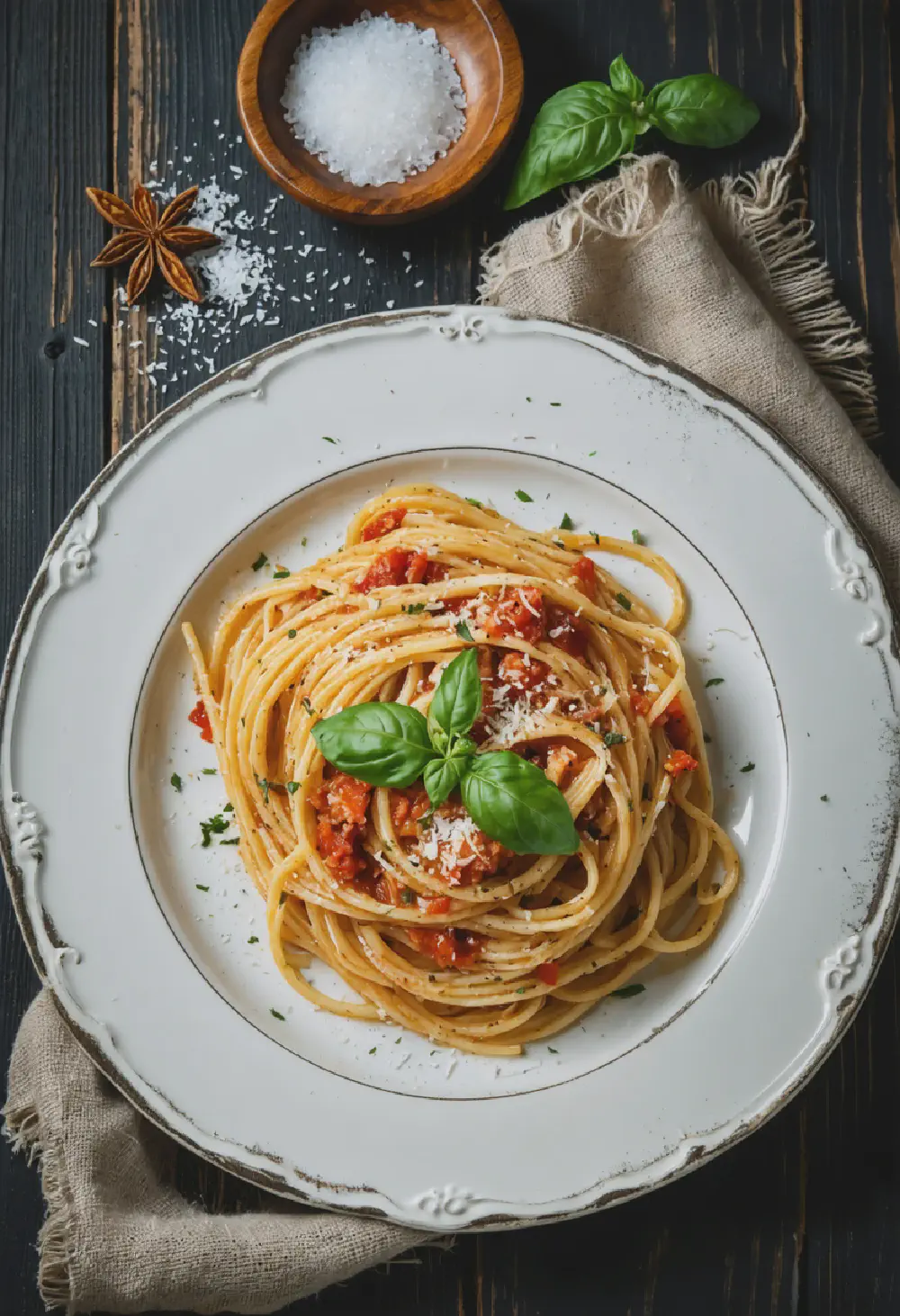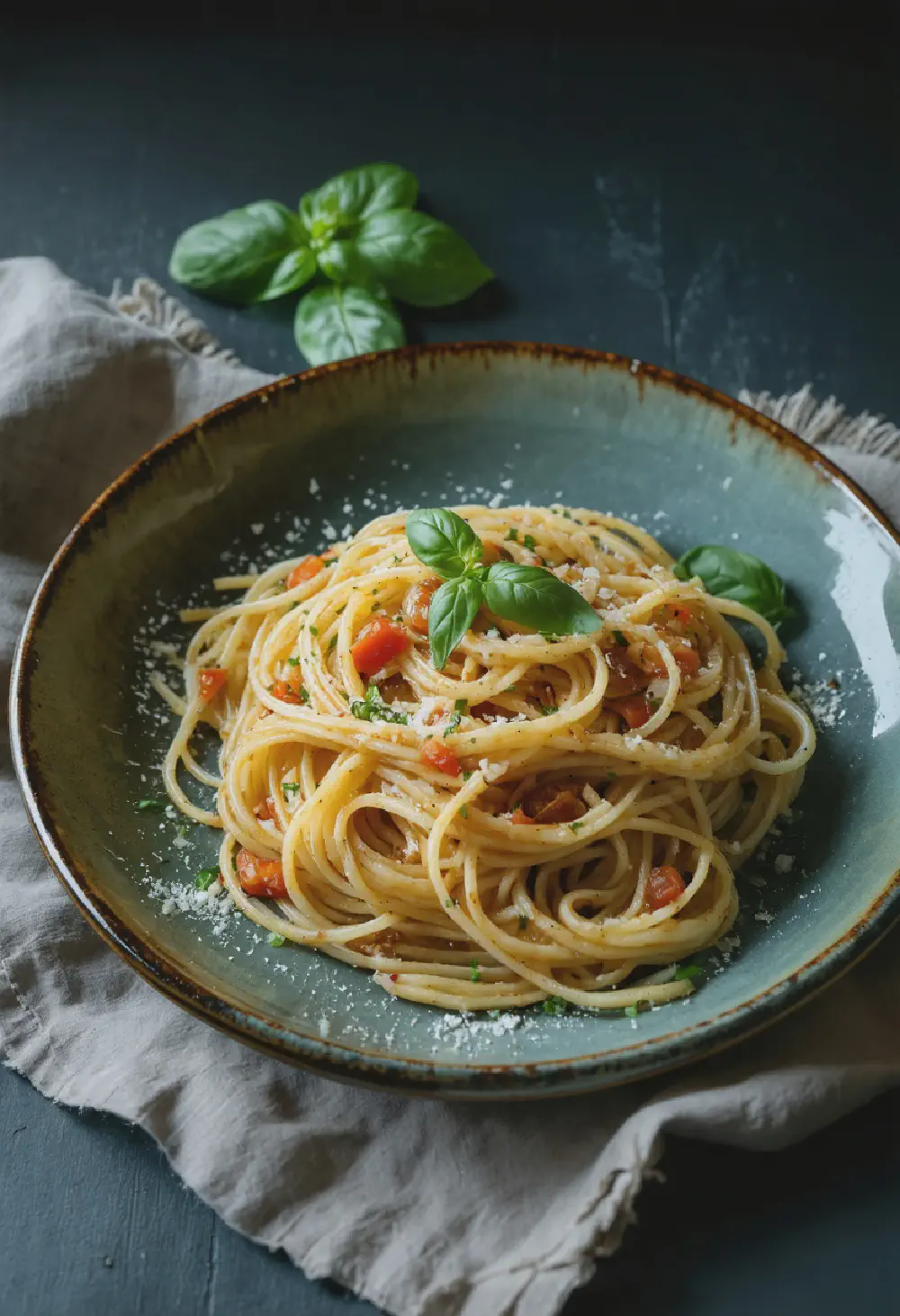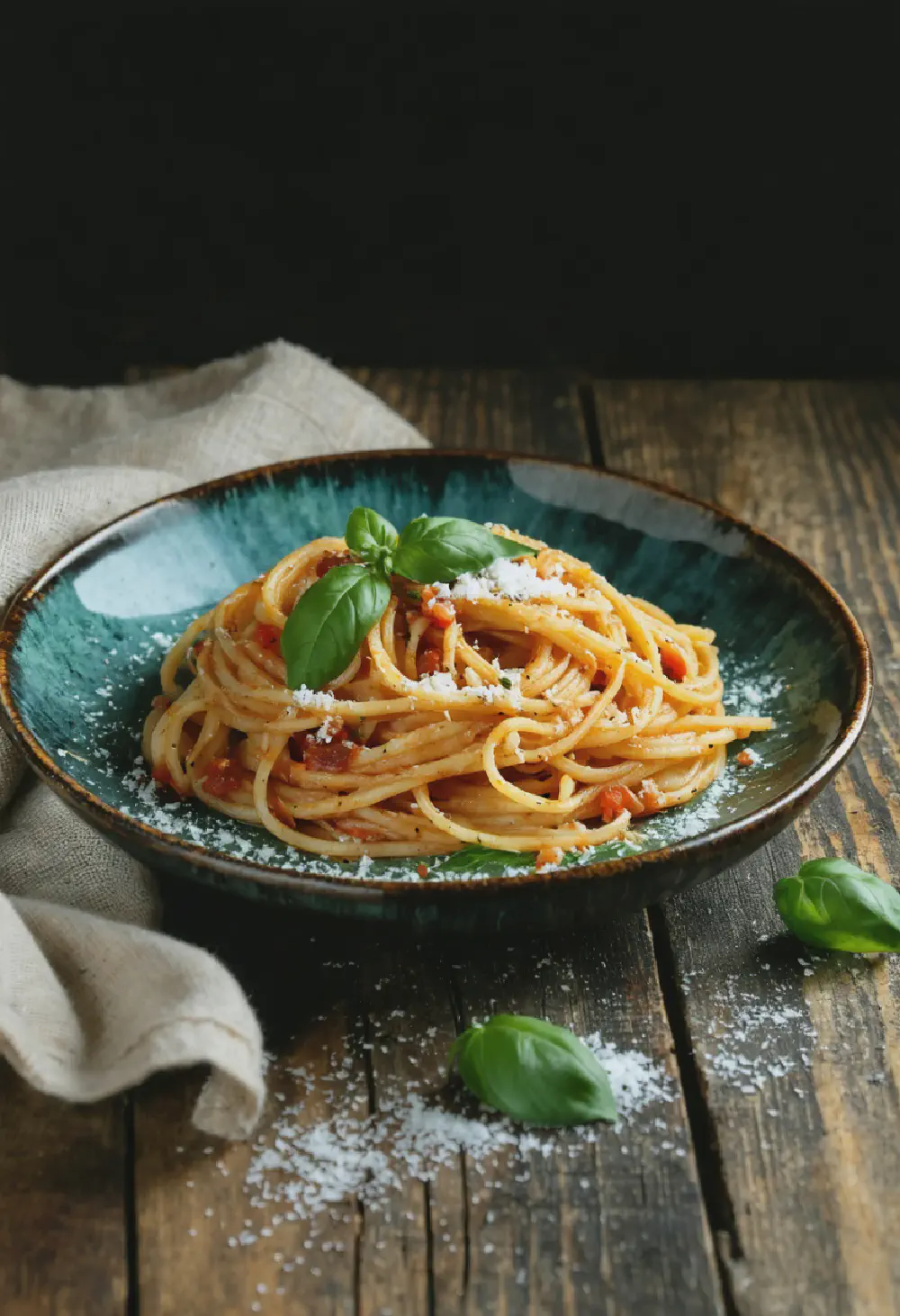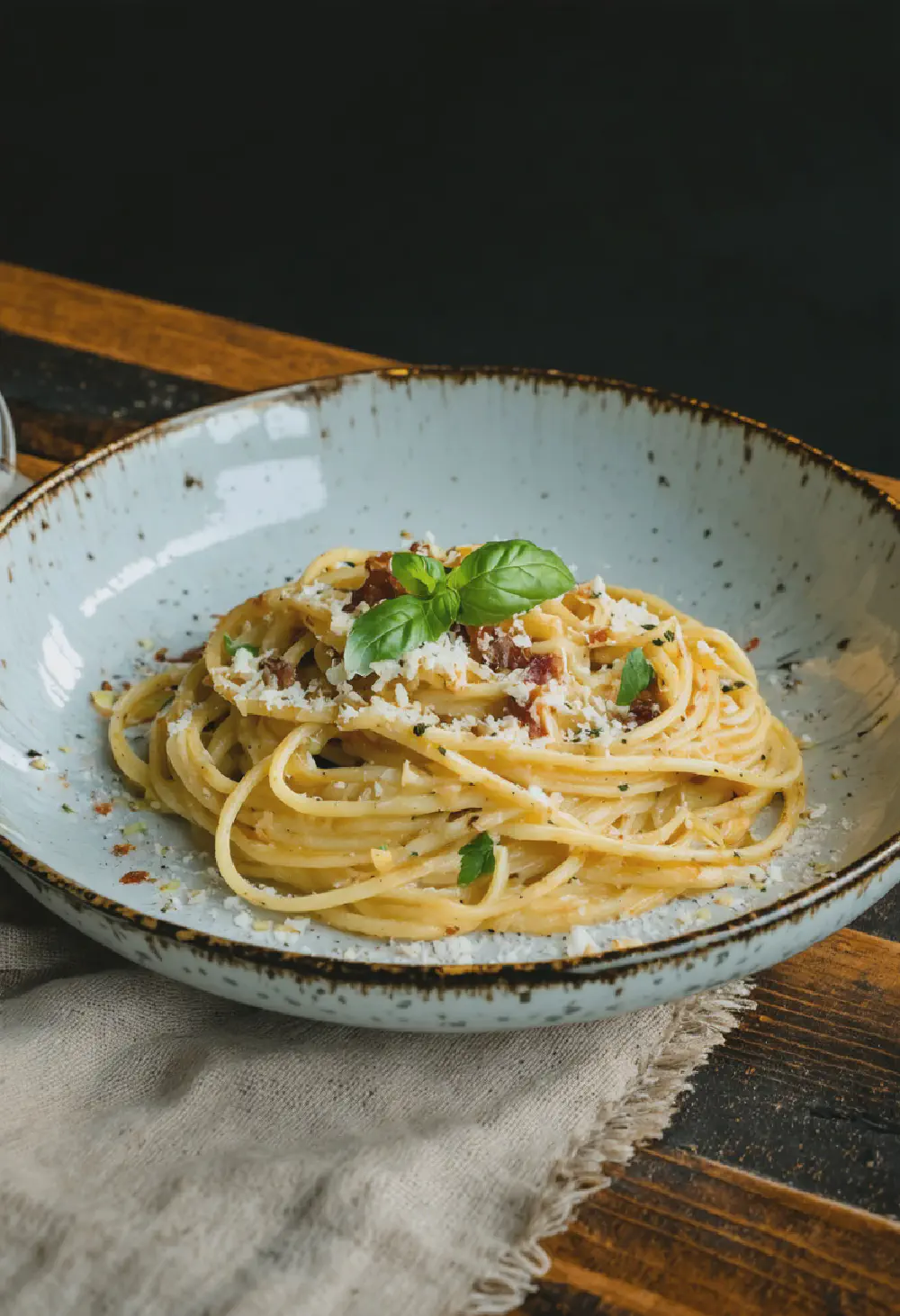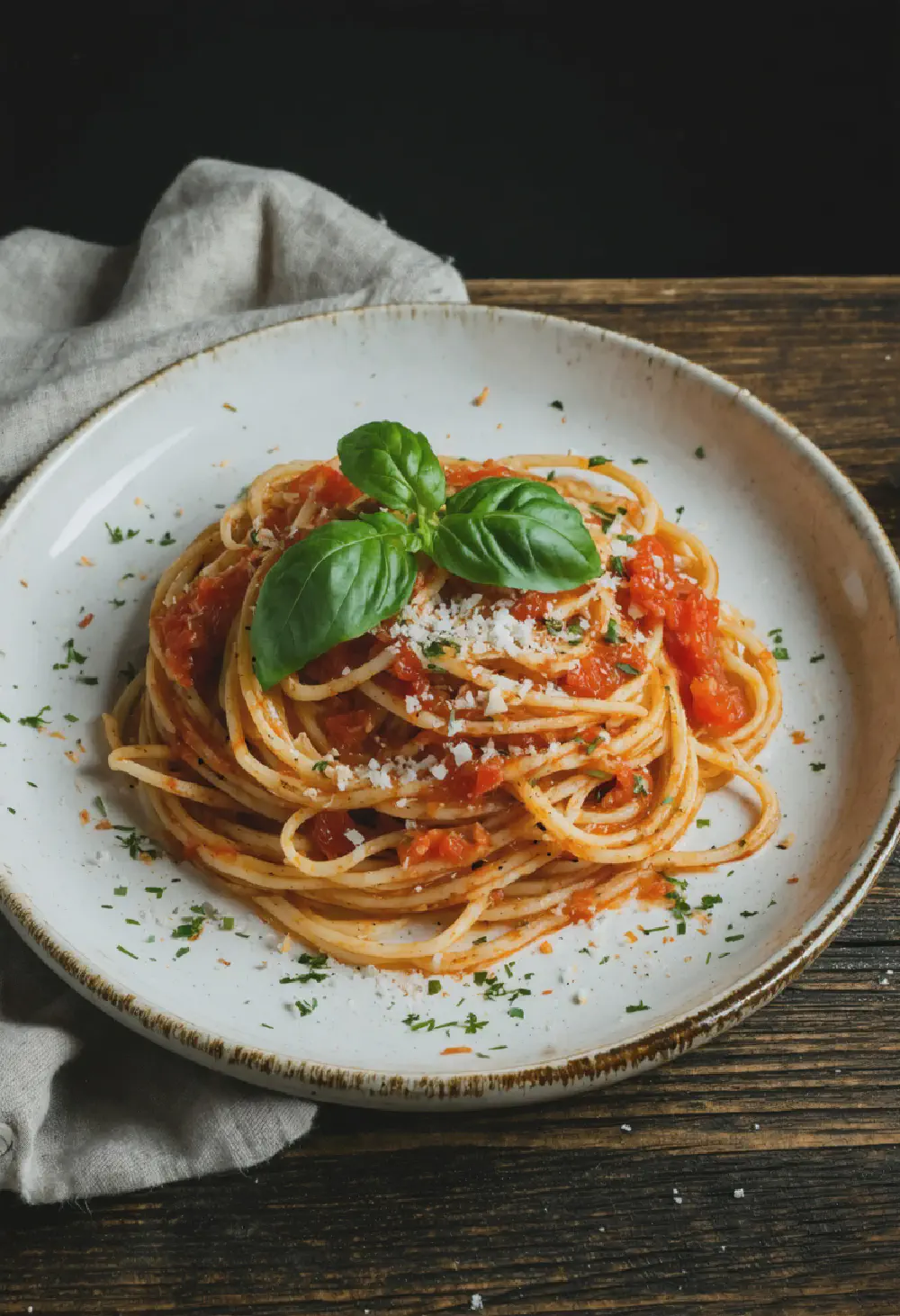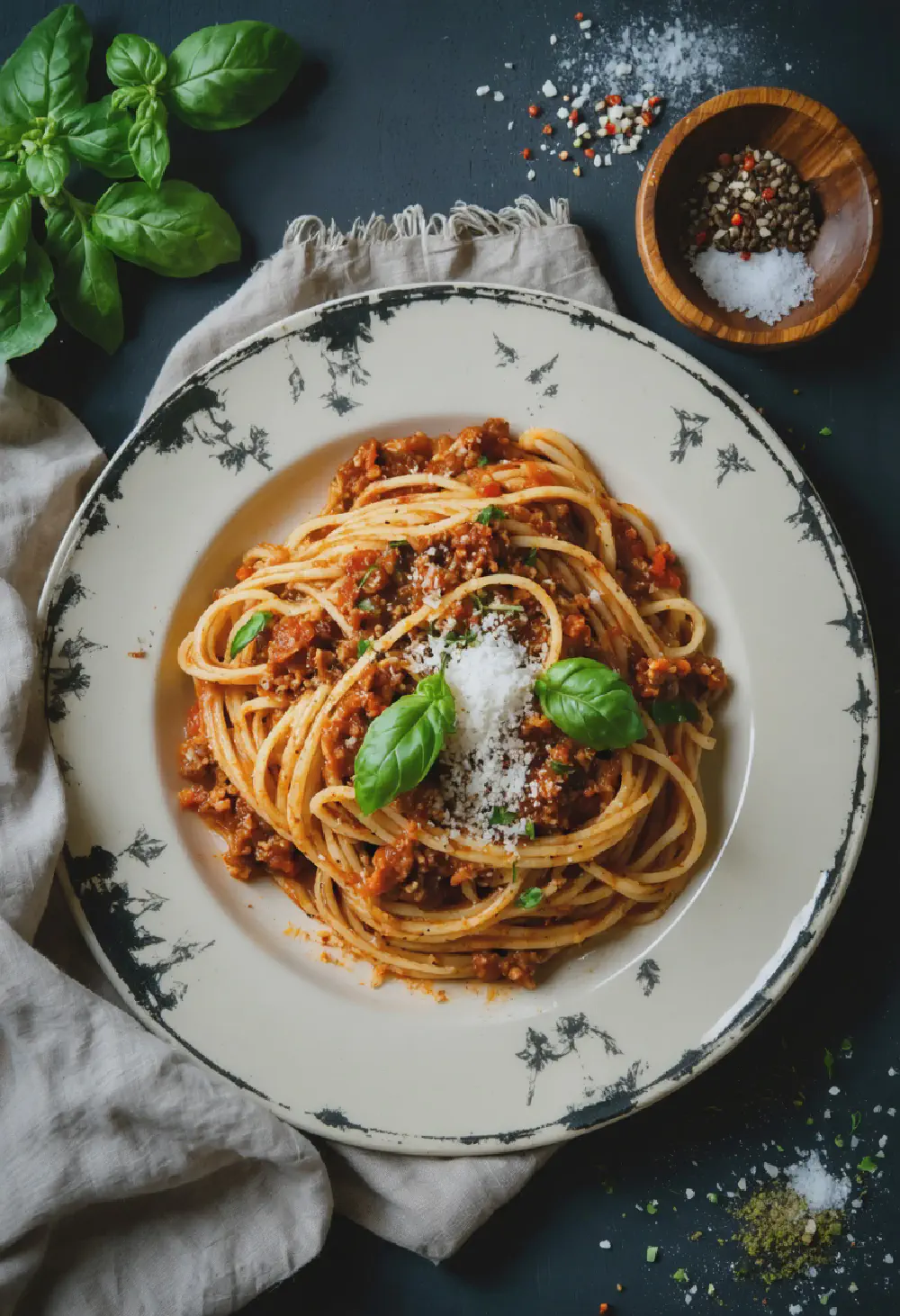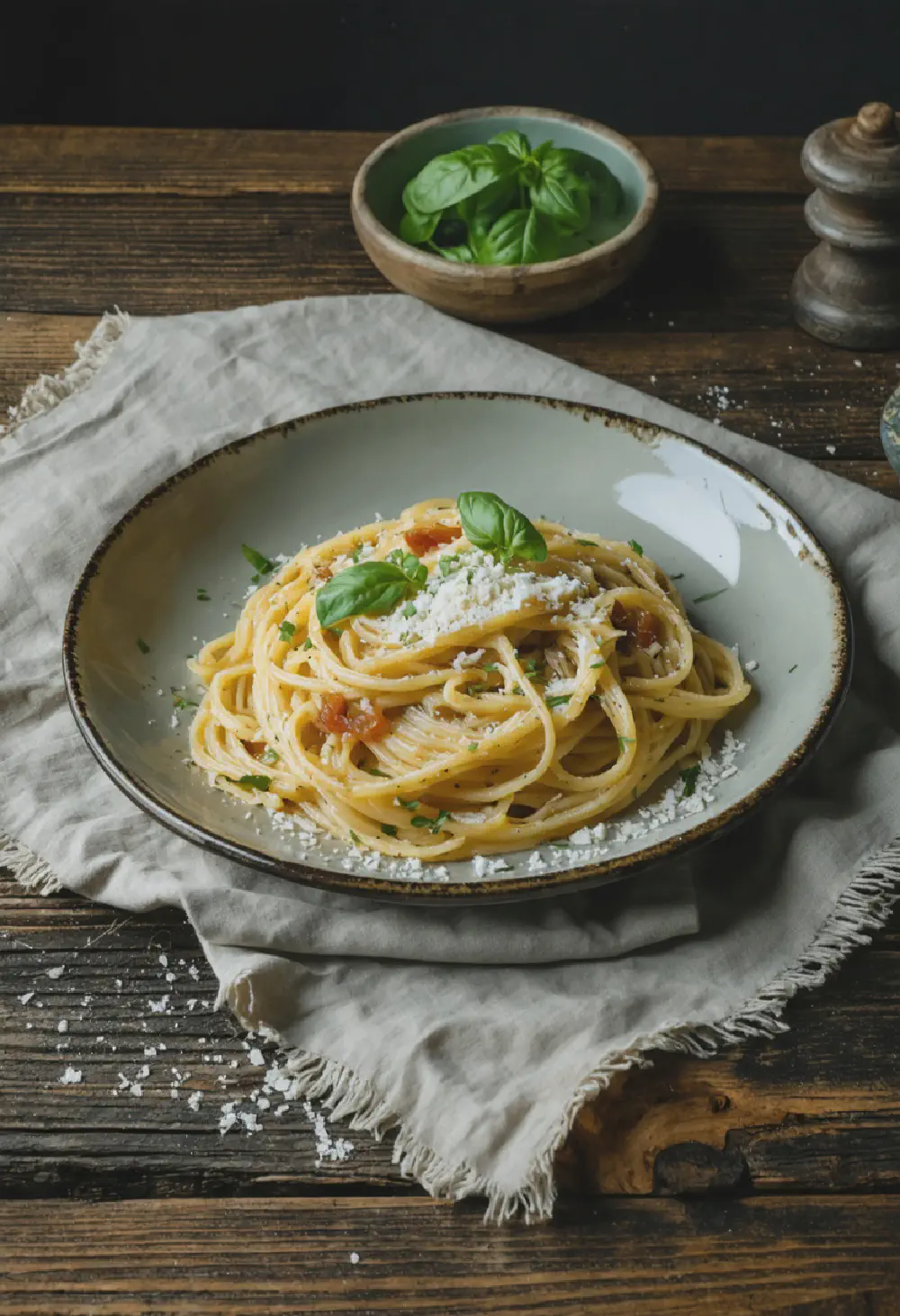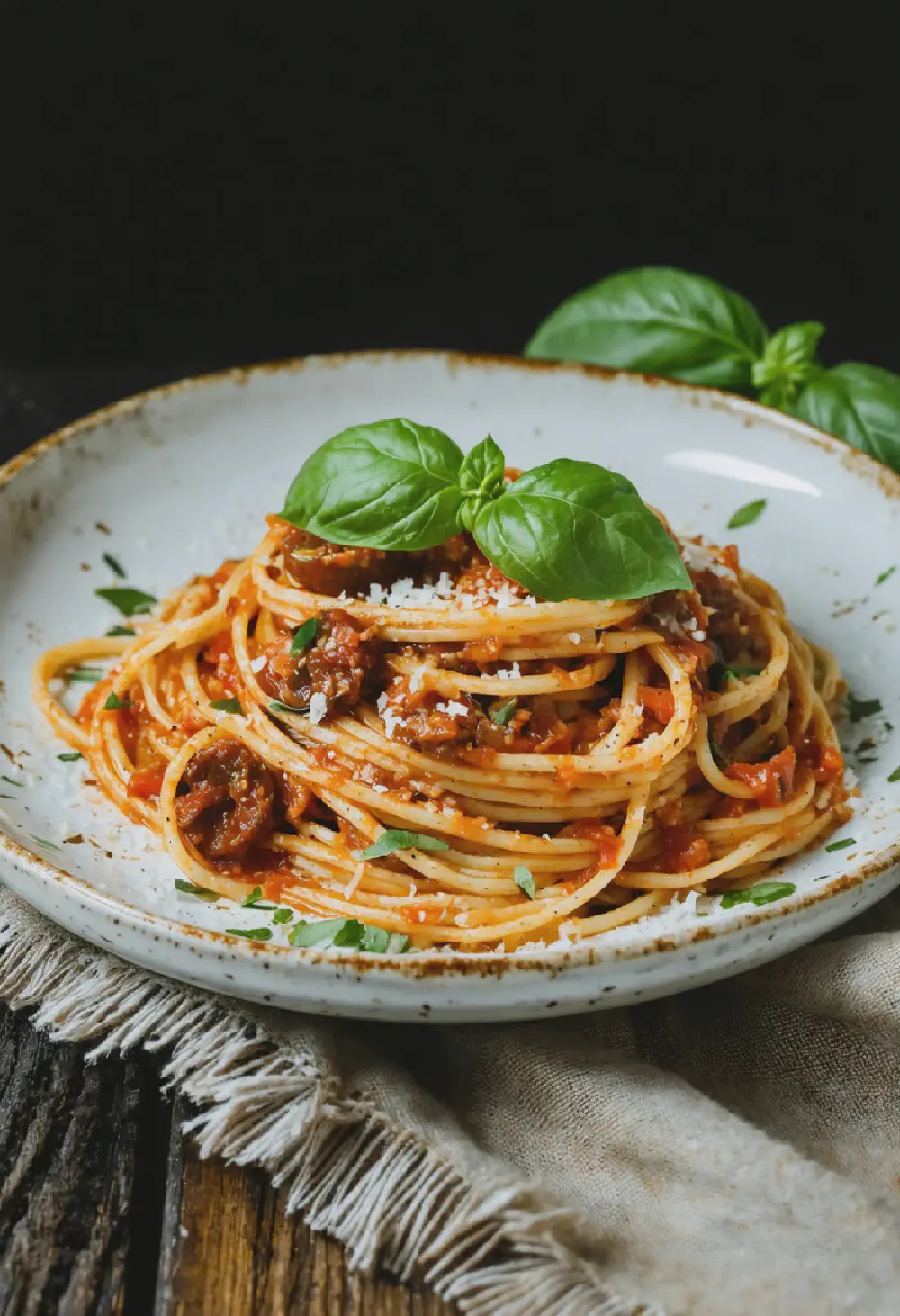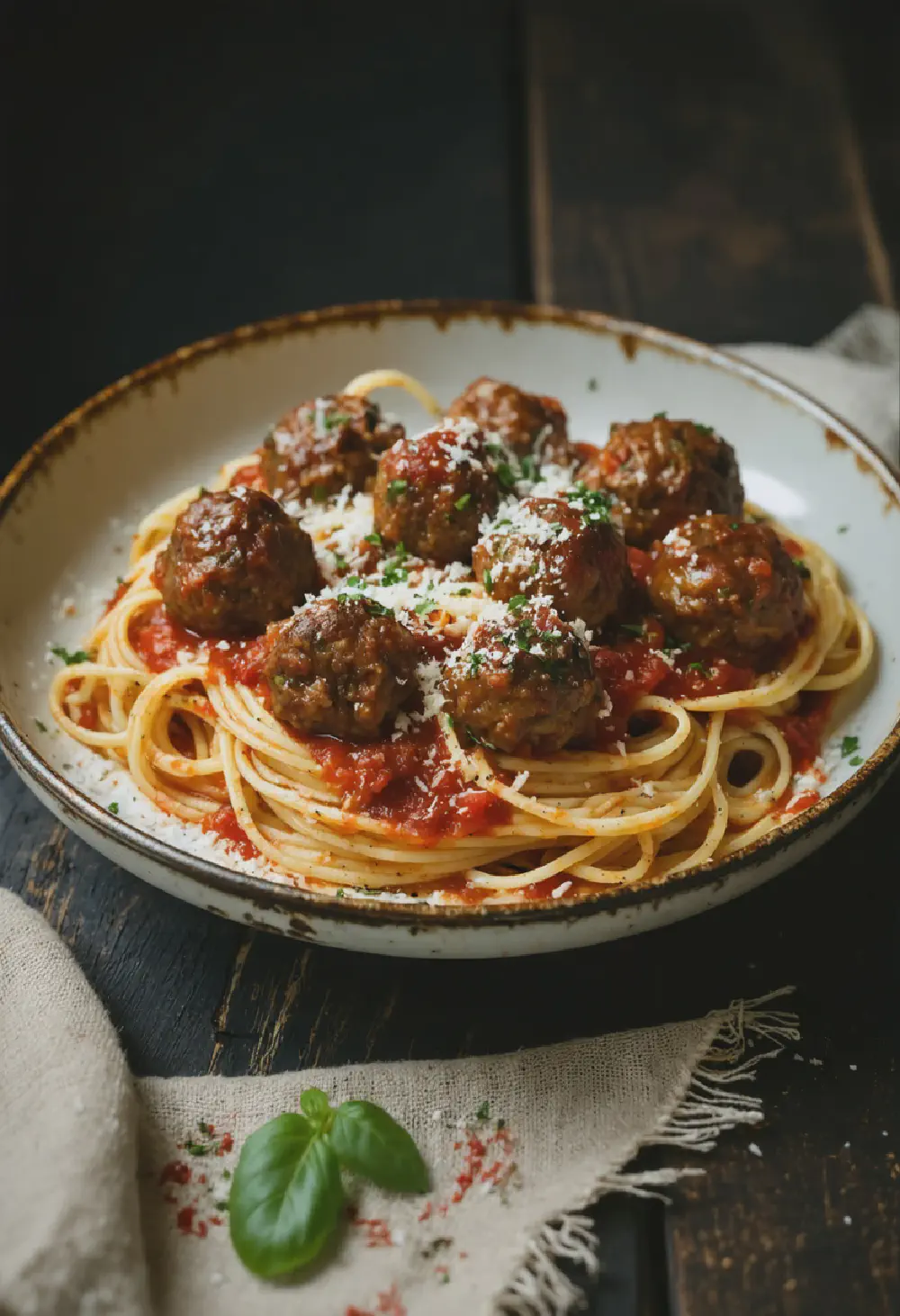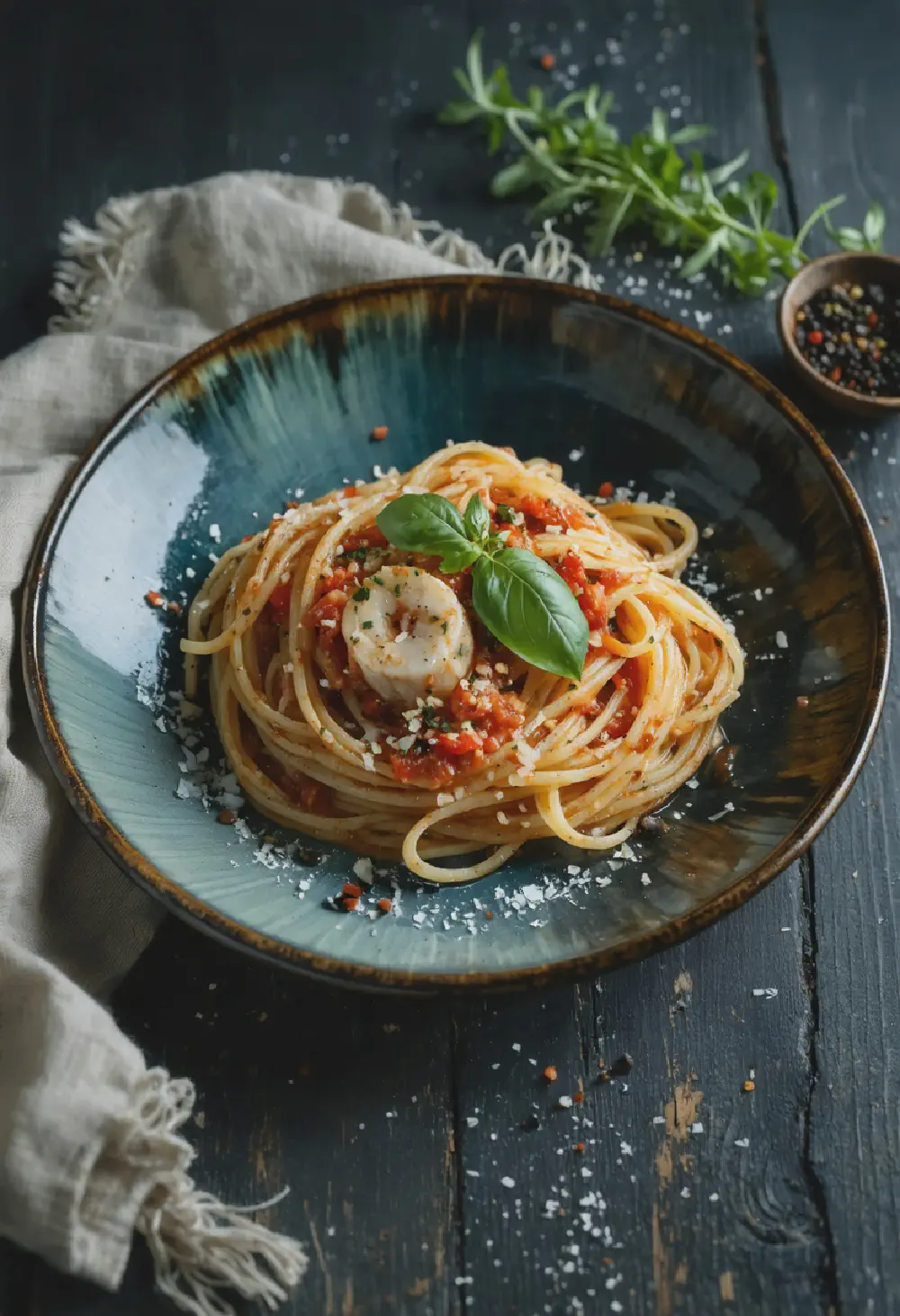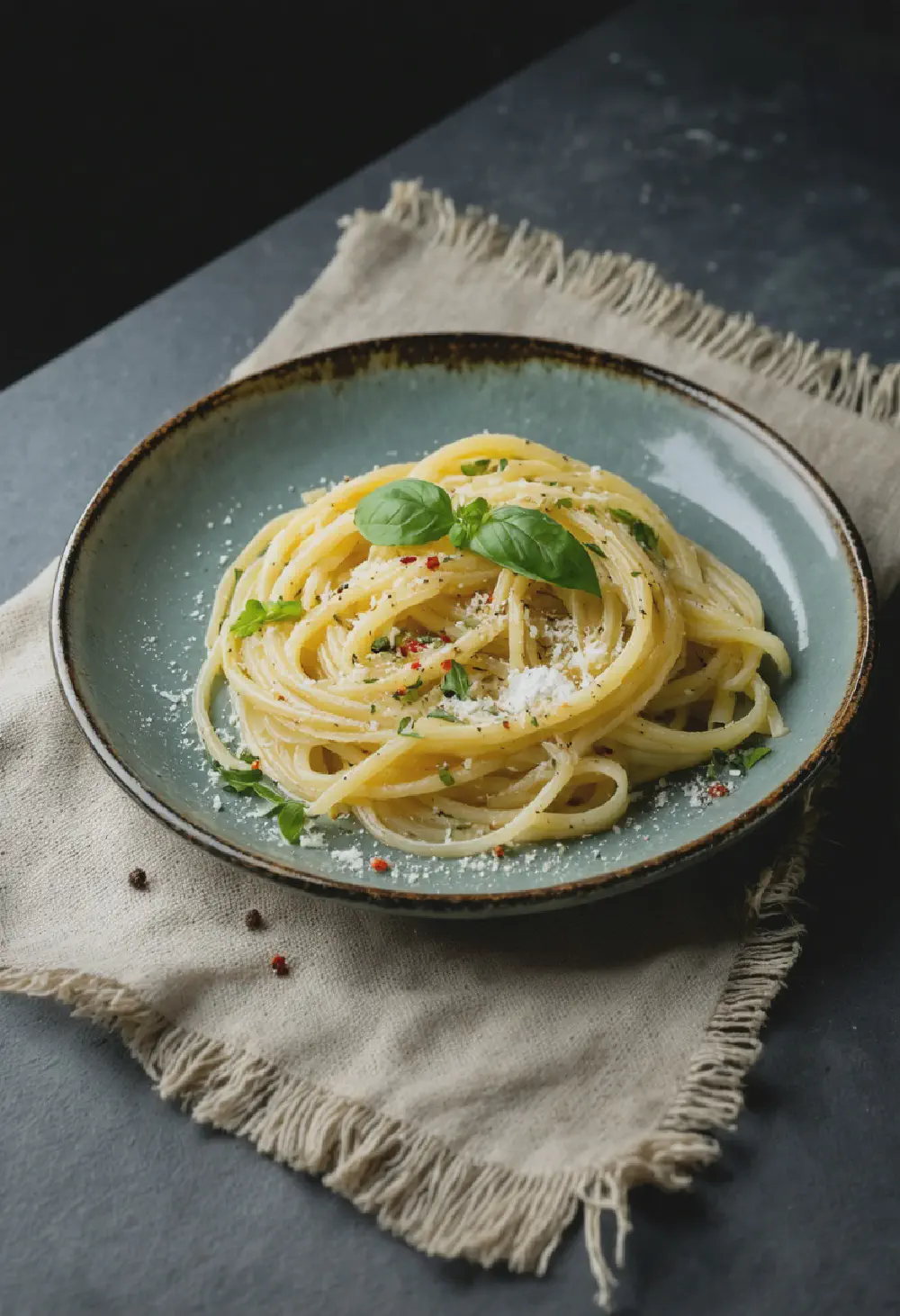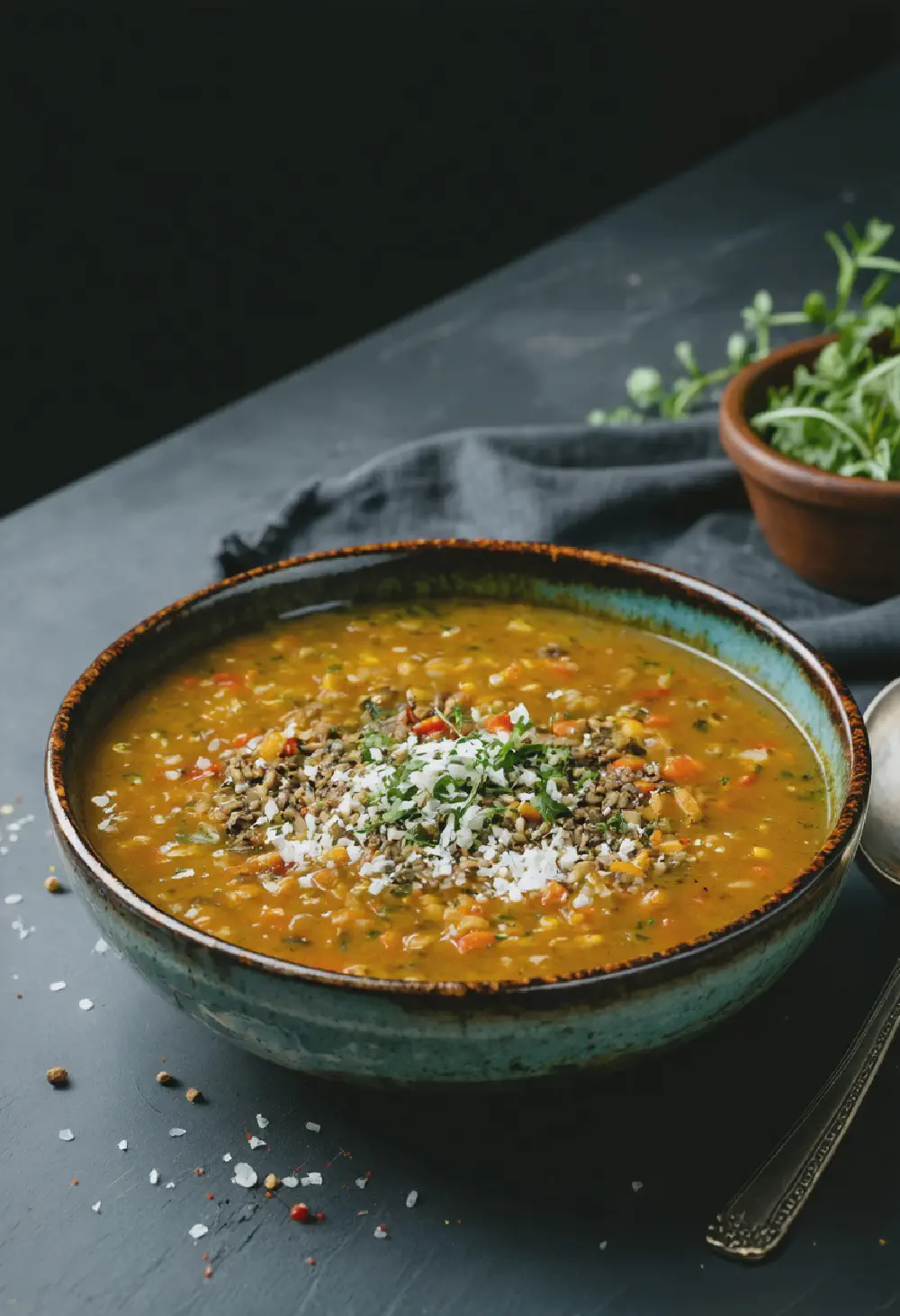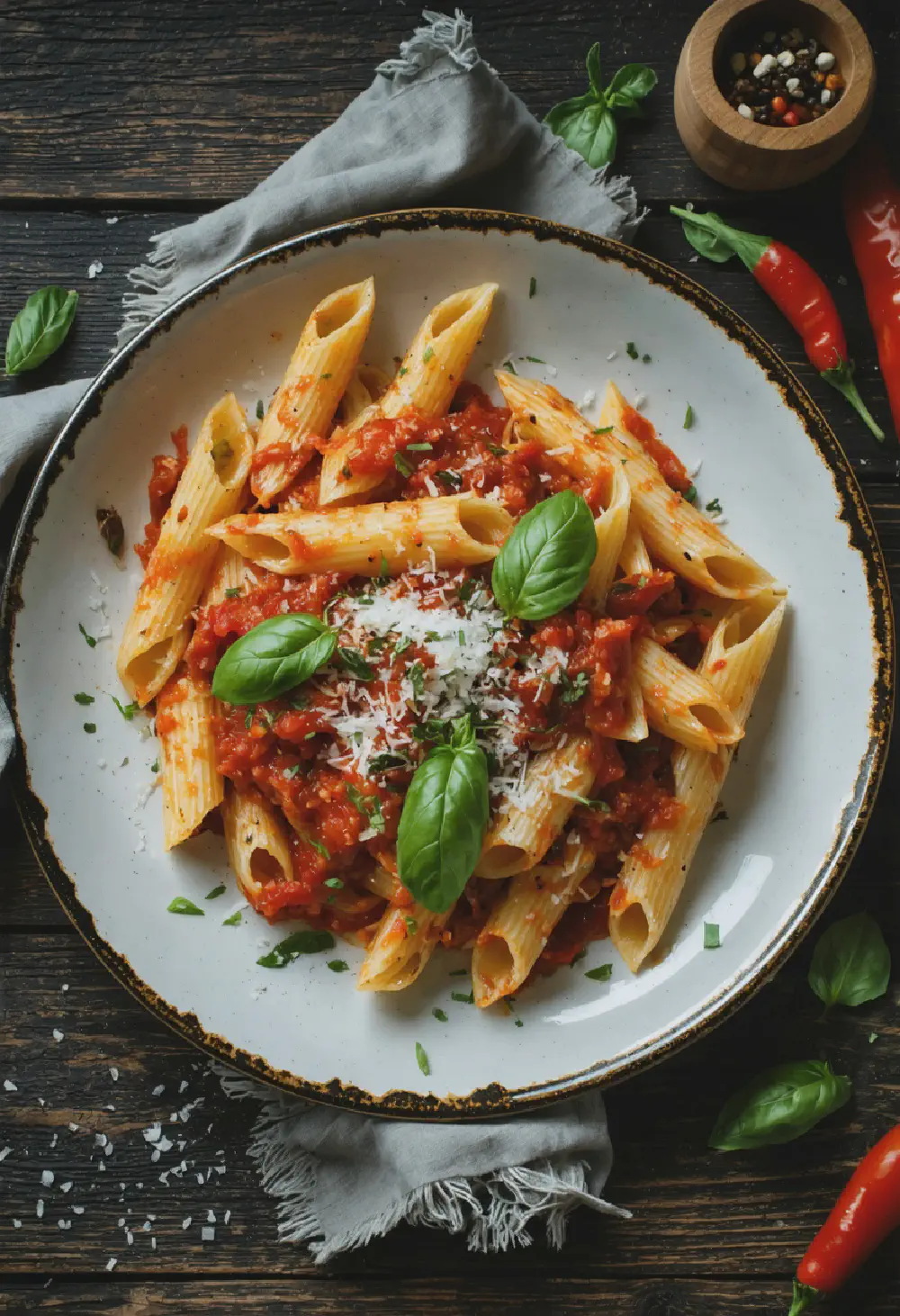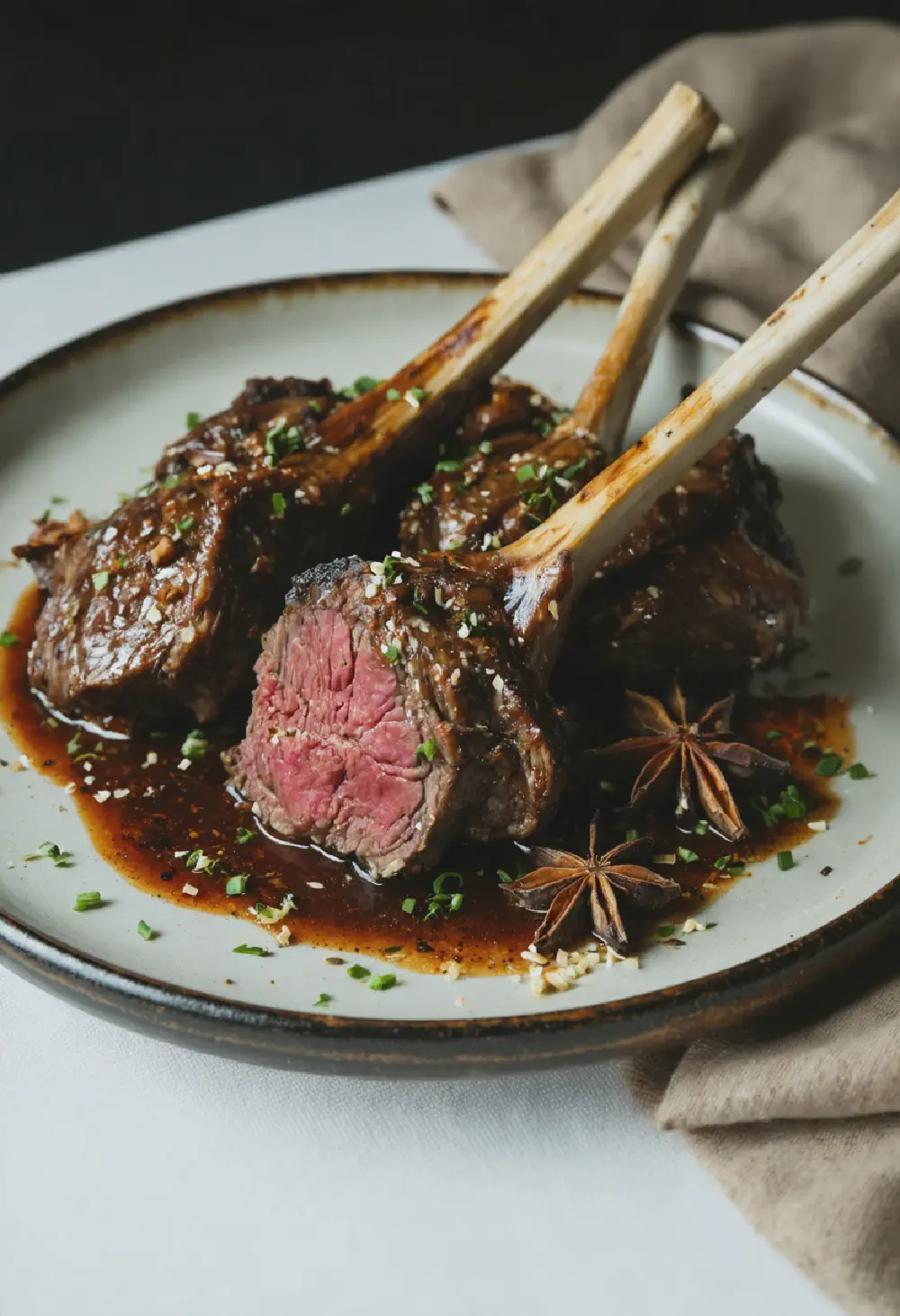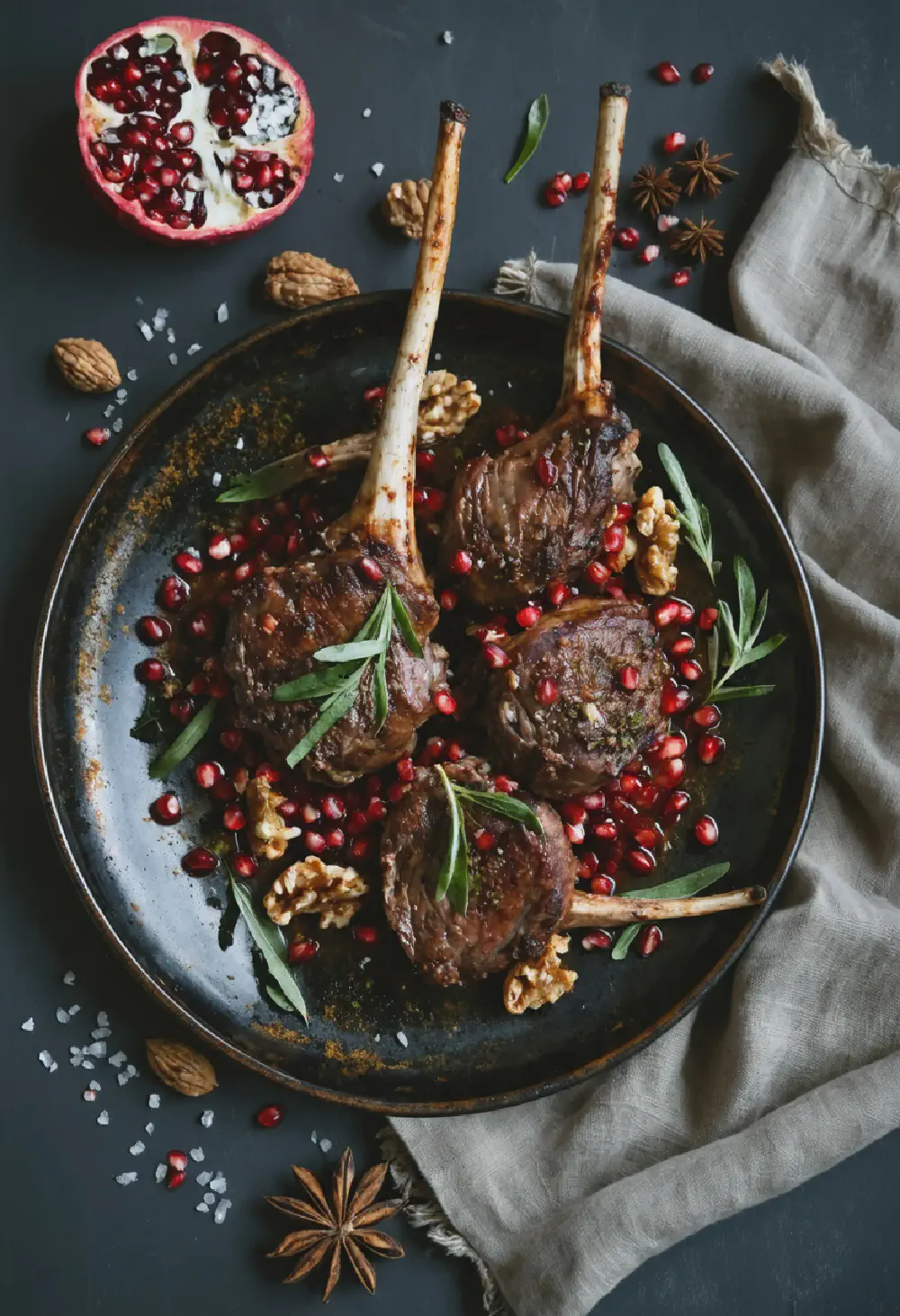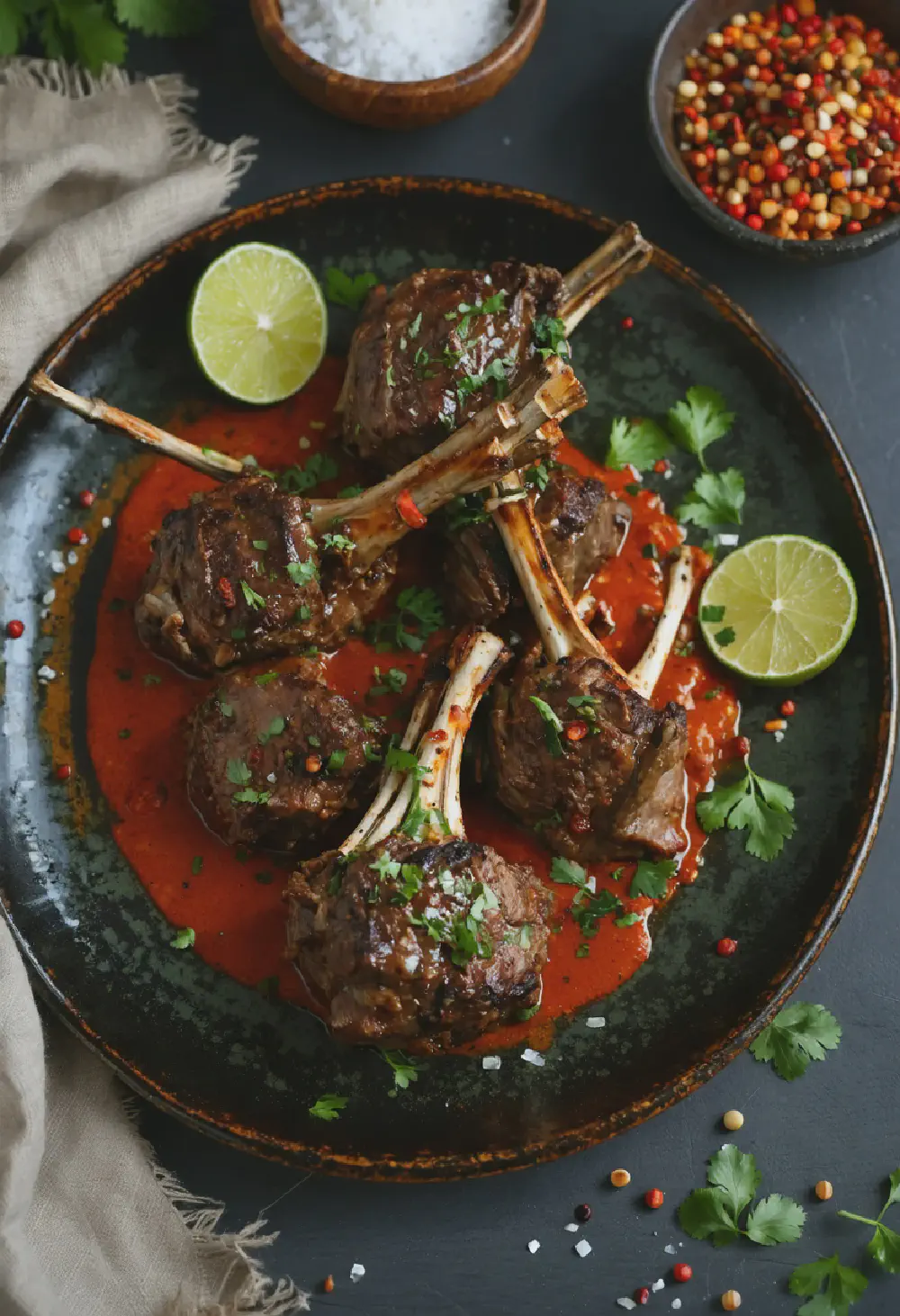Spaghetti alla Gricia
10M
30M
- Makes 4 servings
- 400 grams spaghetti
- 200 grams guanciale, cut into small strips
- 150 grams pecorino romano cheese, freshly grated
- Freshly ground black pepper, to taste
- Bring a large pot of salted water to a boil. Cook the spaghetti according to package instructions until al dente.
- While the pasta is cooking, heat a large skillet over medium heat. Add the guanciale and cook, stirring occasionally, until the fat has rendered and the guanciale is crispy, about 10 minutes.
- Once the guanciale is crispy, remove the skillet from the heat. Reserve about 1 cup of the pasta cooking water, then drain the spaghetti.
- Add the drained spaghetti to the skillet with the guanciale. Toss to coat the pasta in the rendered fat.
- Gradually add the grated pecorino romano cheese to the skillet, tossing continuously to create a creamy sauce. If the sauce is too thick, add some of the reserved pasta water, a little at a time, until you reach the desired consistency.
- Season the pasta generously with freshly ground black pepper. Toss again to combine.
- Serve the Spaghetti alla Gricia immediately, with extra pecorino romano and black pepper on the side for those who want more.
Spaghetti alla Gricia: A Deep Dive into Its History, Taste, and Cultural Significance
History of Spaghetti alla Gricia
Spaghetti alla Gricia holds a special place in the heart of Italian cuisine, particularly within the Lazio region. This dish is believed to have originated in the town of Grisciano, from which it derives its name. As one of the oldest pasta dishes in Italy, Spaghetti alla Gricia predates even the famous Carbonara and Amatriciana, serving as a foundational recipe for these beloved dishes. Historically, it was a meal favored by shepherds who roamed the Apennine Mountains, as the ingredients—guanciale, pecorino romano, and black pepper—were durable and easy to carry. This dish’s simplicity and rich flavors have allowed it to endure through centuries, becoming a staple in Italian culinary tradition.
Taste Profile of Spaghetti alla Gricia
The taste profile of Spaghetti alla Gricia is a harmonious blend of robust and subtle flavors. At its core, the dish features guanciale, a type of cured pork cheek that imparts a deep, savory taste with a hint of smokiness. When cooked, the guanciale releases its fat, which coats the spaghetti, creating a luxurious mouthfeel. Pecorino romano, a sharp and salty sheep’s milk cheese, adds a tangy contrast to the richness of the guanciale. Finally, freshly ground black pepper brings a spicy kick that elevates the dish’s overall flavor. Together, these ingredients create a balanced yet bold taste that is both comforting and sophisticated.
Cultural Significance of Spaghetti alla Gricia in Italian Cuisine
Within Italian cuisine, Spaghetti alla Gricia holds significant cultural importance, particularly in the Lazio region. It is often considered a testament to the principle of “cucina povera,” or “poor kitchen,” which emphasizes the use of simple, affordable ingredients to create delicious meals. This dish embodies the essence of Italian culinary philosophy, where the quality of ingredients and the skill of the cook are paramount. Spaghetti alla Gricia is frequently enjoyed during family gatherings and festive occasions, symbolizing warmth, tradition, and the joy of sharing a meal. Its enduring popularity and influence on other iconic Italian dishes underscore its vital role in the rich tapestry of Italian gastronomy.

